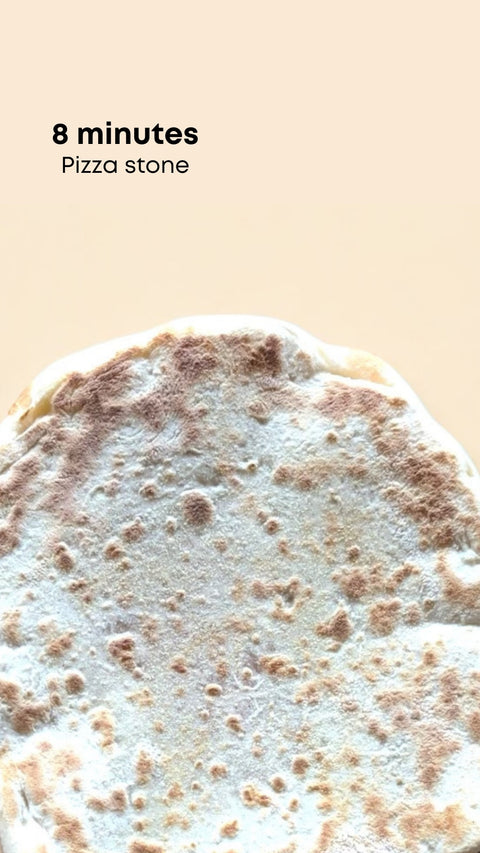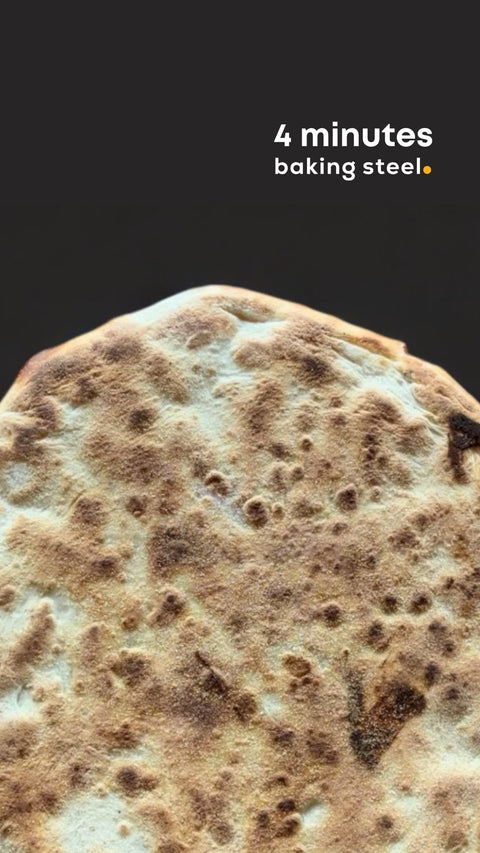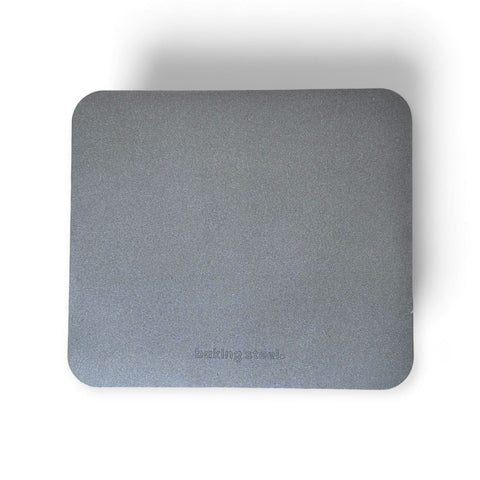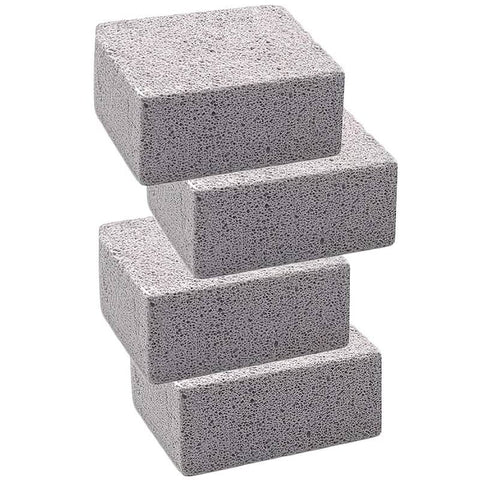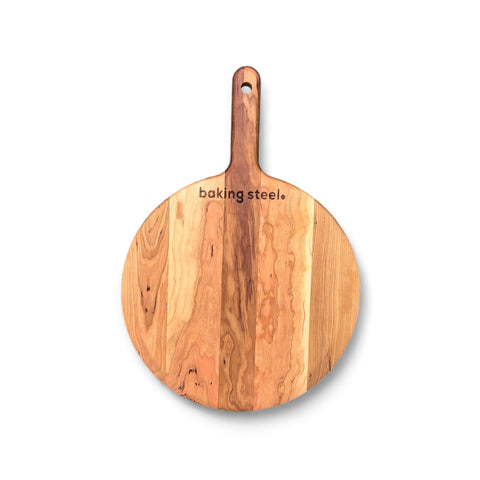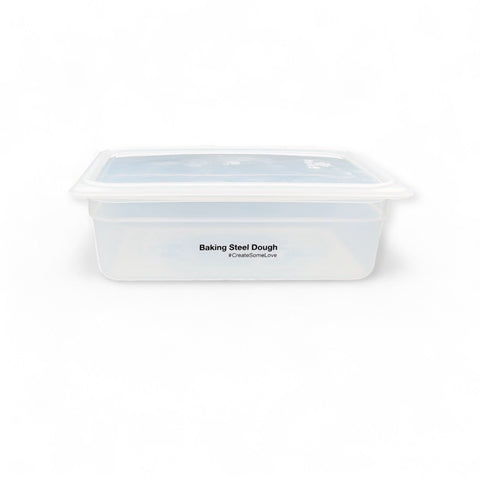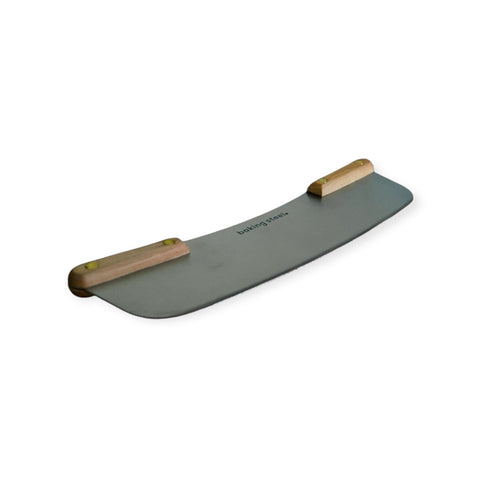Thinking about getting a Baking Steel? Or maybe you already have one but aren’t getting the crispy, blistered pizzas you dreamed of? You're not alone. Even the best tools take a little know-how to use correctly.
At Baking Steel Company, we want you to get the absolute most out of your Steel. Here are the top 5 mistakes people make when using a baking steel—and exactly how to fix them.
1. Not Preheating Long Enough (Patience Pays Off)
Mistake:
Only preheating the oven for 20–30 minutes and expecting a crispy, blistered pizza.
The Fix:
Your Baking Steel needs a full hour of preheating to truly mimic the floor of a professional brick oven. Crank your oven to 500°F (or as high as it goes) and preheat your Steel for at least 60 minutes before launching your pizza.
If your oven has a convection setting, turn it on! The circulating air keeps the heat moving, giving you even better top browning and stronger oven spring.
Patience here makes all the difference between soggy and spectacular.

2. Losing Heat at Launch (Or Why Food Sticks)
Mistake:
Opening the oven too long when launching, fumbling with the peel, or placing pizza on a surface that hasn’t stayed hot enough.
The Fix:
Your Baking Steel is like a battery—it holds intense heat, but if you leave the oven door open too long or hesitate while launching, it can cool down fast. And if the surface isn't properly searing hot, your dough can stick.
When food touches a truly hot Baking Steel, it sears instantly, forming a thin crust that naturally releases. If the Steel isn’t hot enough, the dough can sink into microscopic pores and bond to the surface—causing frustrating sticking. Bottom line, If food sticks, your Steel is not hot enough.
✅ Launch your pizza quickly and confidently to lock in that surface heat.
✅ Use a lightly floured peel and build your pizza right before launch.
✅ Broil for 5 minutes before launching if you want an extra surface heat boost.
3. Using the Wrong Dough
Mistake:
Using dough that’s too cold, too stiff, or not high enough hydration.
The Fix:
For best results, use a well-fermented, room temperature dough. Our favorite is a 72-hour fermented dough or our New York Style 24-hour dough. Higher hydration doughs (65–70%) bake better on a Baking Steel and get that beautiful oven spring.
If you are using store bought dough, make sure to follow these instructions.
4. Placing Toppings Too Early
Mistake:
Building your pizza directly on the peel, but taking too long to top it—making it stick and launch poorly.
The Fix:
Work fast. Lightly flour or lightly semolina-dust your peel before building. Build your pizza right before launching—don’t let it sit too long. If you’re feeling unsure, give the peel a gentle shake before launching to make sure nothing is stuck.
5. Not Taking Care of the Steel Properly
Mistake:
Leaving residue, not seasoning, or letting the Steel stay wet (risking rust).
The Fix:
Treat your Baking Steel like a cast iron pan. After use, scrape off any debris (we recommend using a bench scraper or a baking steel cleaning brick), wipe it down, and store it dry. Occasionally re-season it by lightly rubbing it with oil and heating it at 400°F for about an hour. We recommend flax, canola, or avocado oil.
A well-maintained Baking Steel will last a lifetime—and keep getting better with age.
.
Final Thoughts: Master Your Baking Steel
Getting used to your Baking Steel takes a little practice, but the rewards are massive—restaurant-quality pizza at home, amazing breads, and even smashburgers, pancakes and my personal favorite, Legendary English Muffins.
Avoid these five common mistakes, and you’ll be cooking like a pro in no time.
Ready to upgrade your pizza game and make pizza magic?


